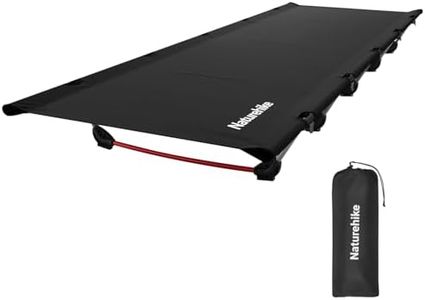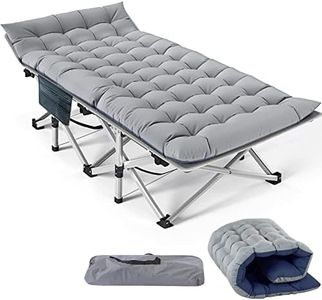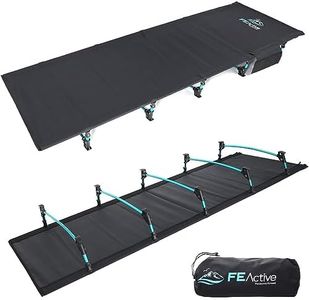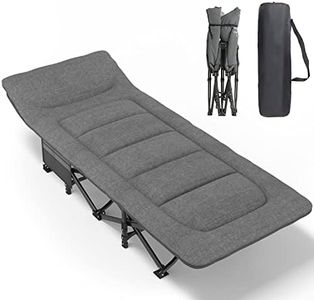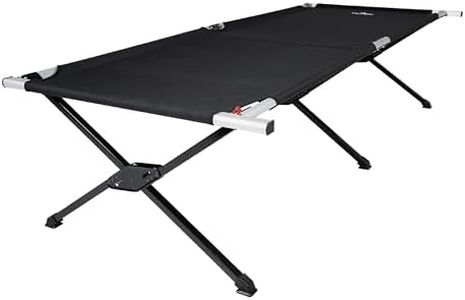We Use CookiesWe use cookies to enhance the security, performance,
functionality and for analytical and promotional activities. By continuing to browse this site you
are agreeing to our privacy policy
6 Best Oversized Cots
From leading brands and best sellers available on the web.Buying Guide for the Best Oversized Cots
When choosing an oversized cot, it's important to find one that matches your needs for comfort, space, portability, and durability. Oversized cots are especially great for people who want extra room and support while sleeping—whether it’s for camping, hosting guests at home, or as a temporary bed solution. By focusing on key specifications, you can narrow down the choices and select a cot that's convenient and comfortable for your particular situation.Weight CapacityWeight capacity refers to the maximum amount of weight the cot is designed to support safely. This is crucial not only for safety but also for durability, as using a cot close to or over its weight limit can cause damage or make it uncomfortable. You’ll find cots with different weight capacities, typically ranging from around 250 lbs to 600 lbs or more. For solo sleepers, it's best to look for a cot that supports at least 50 lbs more than your body weight. If you plan to use the cot for more than one person or want extra durability, choose a high weight-capacity model.
Sleeping Surface DimensionsThe sleeping surface dimensions tell you how much space you have to lay on. Oversized cots often come with extra width and length compared to regular cots. Standard cot sizes might be around 75 x 25 inches, while oversized options can be 80 x 35 inches or larger. Consider your height, sleeping position, and if you tend to move around at night. A taller or larger person, or someone who prefers more space, should opt for bigger dimensions to ensure a comfortable sleep.
Frame MaterialFrame material determines how sturdy and heavy the cot is. Common materials include steel, aluminum, and sometimes reinforced plastic. Steel frames are very sturdy but can be heavier, making them best for places where you don’t have to carry the cot far. Aluminum is lighter and still fairly strong, making these cots a good choice when portability is a priority. Consider where and how you’ll use the cot to decide if you need something light to move easily or a heavier, more stable frame for stationary use.
Fabric MaterialThe fabric material is what you’ll be sleeping on, so comfort and durability are key. Most cots use polyester or canvas, with some offering padded or breathable options. Polyester dries quickly and is resistant to mildew, making it suitable for outdoor use, while heavy canvas is very durable but can be heavier. If you want more comfort, look for cots with a padded top or consider layering with your own mattress pad or sleeping bag. Think about your comfort preferences and where you’re using the cot (indoors or outdoors) when deciding on fabric.
Setup and PortabilitySetup and portability refer to how easy it is to assemble, disassemble, and move the cot. Some oversized cots fold up easily and come with a carrying bag, which is useful for travel or camping trips. Others might require more time to set up due to their size and construction, making them better suited for situations where they’ll stay in one place. If you’ll be moving the cot frequently, look for models that fold in a single action and have a convenient carrying system.
Height off the GroundHeight off the ground means how high you’ll sleep above the floor when using the cot. Higher cots (over 18 inches) make it easier to get in and out, which is great for anyone with mobility concerns, and they also provide extra storage space underneath. Lower cots are usually lighter and more stable, but might be harder to get up from, especially for older adults. Consider your comfort and storage needs when choosing the cot’s height.
